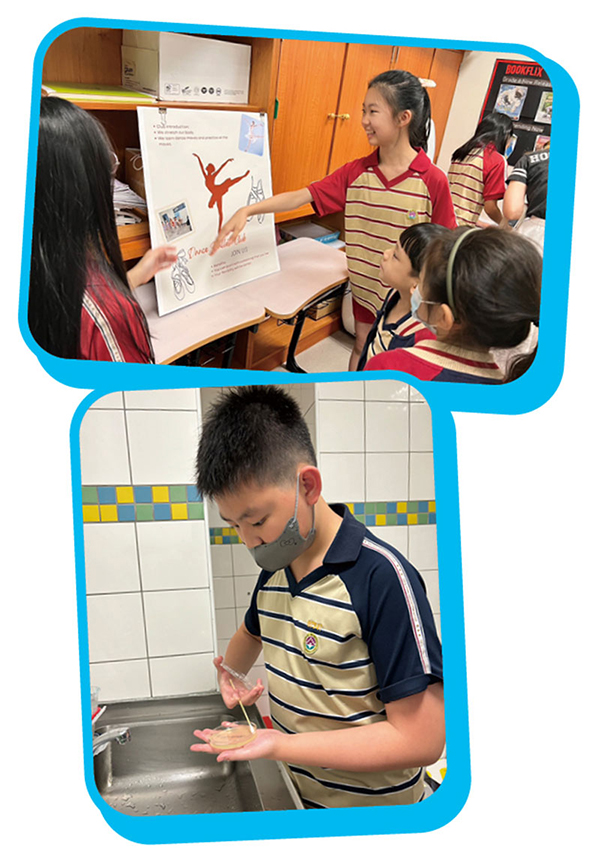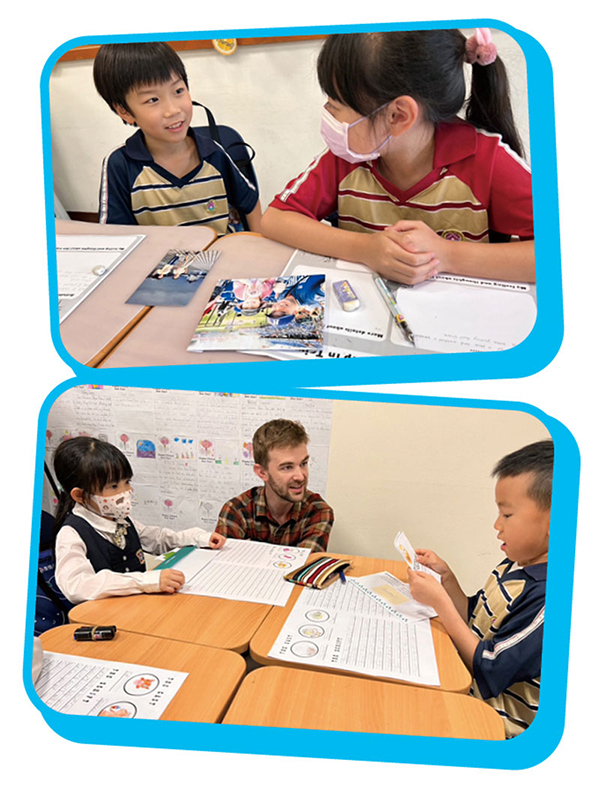

~ Roland Claassen
Assistant Director
In our International English curriculum, we firmly believe that giving students the freedom to make choices in their learning journey is key to fostering engagement, motivation, and deeper understanding. This philosophy is at the heart of our Project-Based Learning (PBL) approach, where students are not just passive recipients of information but active participants in their education.
Why Choice Matters
When students have a say in their learning, they are more likely to engage meaningfully with the material. Personal interests and concerns become the driving force behind their projects, making learning more authentic and relevant. Recently, as part of a project connected to our "Hooked on Books" time, our third-graders selected their favorite characters from the books they read to be candidates for their class representative. This simple choice transformed their engagement, as they felt a personal connection to their projects.
Similarly, our fifth graders were given the freedom to choose one of their school clubs to promote to our younger grade levels who still have to make important choices with over 20 school clubs to join. This choice makes the project more personal and impactful.
Structured Freedom: Our Approach
While we embrace student choice, we also recognize the need for structure to guide these choices effectively. In our PBL framework, we start with loosely defined, open-ended project goals. This balance ensures that students have the freedom to explore their interests within a scaffolded environment that provides direction and support.
Our teachers play a crucial role as facilitators in this process. They provide continuous feedback, track progress, and offer guidance to help students stay on course. For example, in our "Germ and Bacterial Investigation" grade 6 KCFS project, students selected their own locations around the school for sampling. This autonomy sparked curiosity and initiative, while teachers ensured that students followed scientific methods and maintained safety protocols.


Learning Through Challenges
One of the biggest challenges in a choice-based classroom is that some students realize that the choice they made isn't what they expected. This situation becomes an invaluable teaching moment and a chance to improve. We help students navigate their feelings, discuss their struggles, and decide whether to persevere or pivot. This process teaches resilience, planning, and critical thinking.
Moreover, students often find that their peers are their best resources. Collaborative projects encourage teamwork, as students share ideas and strategies, learning from each other. This collaborative spirit enhances the learning experience and helps students appreciate diverse perspectives and problem-solving approaches.
Guided Choices and Teamwork
While we allow students to choose their learning paths, we carefully design the "fishing pond" they explore. Instead of the vast, overwhelming ocean, we provide a well-defined space with exciting and challenging "fish" to catch. This metaphor illustrates our approach: offering a range of stimulating options within a supportive framework.
ur structured environment ensures that even with freedom, students are not lost at sea. They have clear goals, resources, and the scaffolding needed to succeed. Teachers are always there to steer them, providing the right balance of guidance and independence.
From the Editor
Soaring High: Congratulations to Our Graduates!
國際處主任 賴國宜
"Do you have ten dollars? What do you like to buy?" This conversation is common in English Village during break time. Students have plenty of options to spend 10 KCD on : watching a movie, playing games at the Fun Fair, shopping at the Pop-up Store, or even depositing it in the bank to earn interest! The Fun Hub offers a range of activities for children to choose from, teaching them the value of money and challenging their money management skills. Are you curious about how your children spend their Kang Chiao money? Before you chat with them, please read Mr. Hepperly's article to know more about the Kang Chiao money system and Fun Hub activities.
English Open Day events are still ongoing, with record-high attendance rates from parents of every grade. We sincerely thank all parents for participating. Your presence underscores the importance you place on your children's learning and provides invaluable support and encouragement for teachers and students.
「你有十塊錢嗎?你想買什麼?」下午大下課,在英語村經常聽到以上的對話,十塊康橋幣可以做很多事,例如:看電影、去Fun Fair玩遊戲、到Pop-up Store購買文具,或是把錢存到銀行,還會有利息喔!在英語村的課堂,只要認真參與活動就有機會獲得康橋幣,如何保管和分配這項「收入」,是孩子們學習理財的開端,英語村的Fun Hub提供各種活動讓孩子選擇,如何支配自己有限的金錢,考驗他們管理資源的能力,也從中認識財務與價值的轉換。有些孩子喜歡到銀行提款再將錢存入,再利用ATM查詢餘額,體驗存錢的樂趣,有些孩子則花錢不手軟,直到沒錢了才體會到賺錢不易。透過英語村外師Mr. Hepperly的文章,您可以更理解Fun Hub活動,也可以跟孩子聊聊他如何管理康橋幣。
每周一個年級的青山Time和English Open Day發表會持續進行,各年級的家長出席率屢創新高,感謝所有家長的參與,您的出席讓孩子深刻理解您對他們學習的重視,也為老師和孩子們提供最大的支持與鼓勵。